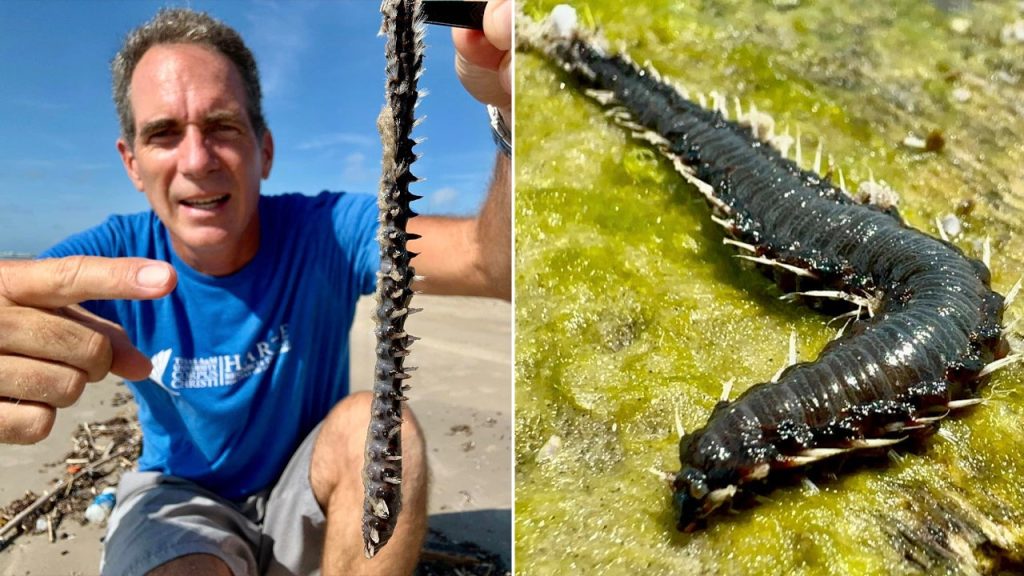A venomous creature known as a fireworm, or bristle worm, has been washing up along the beaches of Corpus Christi, Texas, causing concern among beachgoers. The National Park Services (NPS) has warned that these tiny, needle-like spikes on the creature are filled with venom, causing a fiery pain that can last for hours. The Harte Research Institute for Gulf of Mexico Studies shared information about the fireworms on social media, cautioning people about the dangers of coming into contact with them. These creatures can be found in the Atlantic Ocean, Mediterranean Sea, and the Gulf of Mexico, feeding on corals, anemones, and small crustaceans like gooseneck barnacles.
If someone is unfortunate enough to be pricked by a fireworm, the NPS recommends using adhesive tape to remove the poisonous spike. The white bristles on the worm contain neurotoxins, which can cause sensitivity in the skin for weeks after being stung. These fireworms use their venom-filled bristles as a defense mechanism against predators. Despite their dangerous nature, the Harte Research Institute acknowledges the importance of these creatures in their natural environment and the role they play in the ecosystem. One Facebook user expressed gratitude for the institute’s efforts to protect people from these potentially harmful creatures, while another user admitted to being disturbed by the existence of fireworms.
The Harte Research Institute, which focuses on sustainability and conservation efforts in the Gulf of Mexico, has been instrumental in raising awareness about the presence of fireworms on the Texas Gulf Coast. The institute highlighted the importance of understanding and respecting these creatures, despite their nightmarish appearance. Along with the fireworms, other odd occurrences in nature have been reported, such as the discovery of a “doomsday fish” in California and a prehistoric-looking spotted gar caught by a man in Fort Wayne, Indiana. These unusual events serve as a reminder of the diverse and sometimes intimidating aspects of the natural world, including creatures like the Goliath birdeater spider, which holds the title of the world’s largest spider.
In addition to their sharp and venomous bristles, fireworms are known to feed on various marine organisms, including corals and barnacles. The presence of these creatures has sparked fear and curiosity in beachgoers, prompting warnings and safety precautions from organizations like the NPS. The effects of a fireworm sting can be long-lasting, with sensitivity in the skin lasting for weeks after contact. Despite the dangers posed by these creatures, the Harte Research Institute emphasizes the need to coexist with them and recognizes their importance in the marine ecosystem. By educating the public about these venomous creatures and providing guidance on how to handle encounters with them, organizations like the Harte Research Institute are working to promote awareness and conservation efforts in the Gulf of Mexico.


